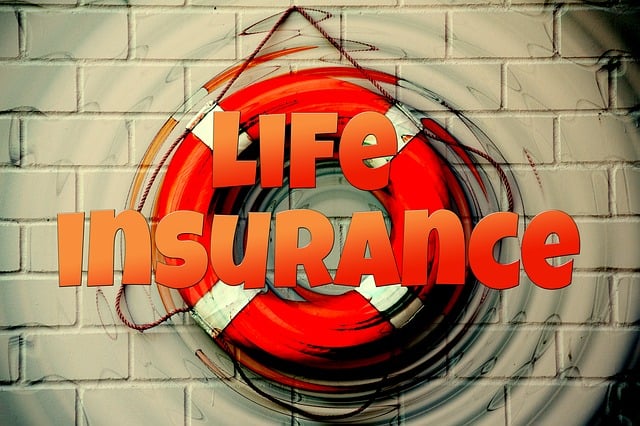Low Cost Life Insurance Companies

Nationwide consolidated its position at the top of the list as the cheapest life insurance company on this list. The Walter Investment Group had higher rates than the best providers we reviewed for the selected plan, such as Nationwide, which offers monthly rates at $56 for a 35-year-old nonsmoker wanting $1 million in coverage for 20 years. As much as price should not be the only consideration when choosing the company through which to get the policy, it can also be an influencer. The average premium difference between companies for male or female, senior, or smoker consumers lets you find the suitable value life insurance policy.
This is especially important when it comes to the life insurance investment, which guarantees the economic stories of your loved ones. However, it is not easy to get an affordable policy in this regard due to the existence of many policies. You will need the coverage that will suit you nicely without having to leave your pocket feeling almost drained.
Here, we present a selection of the cheapest life insurance companies and what options they offer the buyer, and provide you with the necessary guidance to make a rational choice that will serve both you and your close ones to the benefit.
Nationwide: Most Affordable
Pros:
- Was seen to have some of the lowest charges for the two genders.
- Offers several terms and permanent plans which range from the universal as well as the whole life.
- The Life Essentials term life policy has no medical exam; however, they have to complete some health questions part.
- Included options include: Long-term care, accidental death benefit, accelerated death benefit, and waiver of premium (Depending on the policy).
Review:
Nationwide has two kinds of term life insurance as well as several universal and whole life insurance plans. While Life Essentials can be applied for online, getting quotes for permanent policies can only be secured from an agent.
Policies Available: Term, whole, universal, variable universal, indexed universal, and survivorship indexed universal.
Coverage Amounts: The cost of the term policies is $250, 000, whole life policies $10, 000, and the universal policies $100, 000. With higher amount limits, however, you need to discuss with a Nationwide agent.
Cons:
- Sample quotes are not available online for permanent policies, one has to talk to an agent.
Financial Strength: A+
Types of Policies Available: Term, Whole, Universal
Pacific Life: Life Insurance Company of the Year 2024
Pros:
- Whole and variable term life policies may be exchanged for cash value policies.
- Most of the direct permanent life insurance choices are accepted up to the age of 90.
Review:
Pacific Life has term and many different kinds of universal life insurance while it does not offer whole life insurance. A major advantage is that a term policy can be exchanged for a permanent policy without going through a medical examination, in a certain period or before the age of 70. All but one of the permanent policies Pacific Life offers allows an applicant up to age 90, and the Elite Term life policy will accept applicants up to age 75. Quotes and application t frequencies are not available through the Internet site so you would have to talk to an agent.
Policy Types Offered: Term, universal, indexed universal, survivorship indexed universal, variable universal, and survivorship variable universal.
Coverage Amount: Term life coverage begins as low as $50,000 with the possibility of going over $3,000,000 depending on the policyholder’s underwriting. It was impossible to determine coverage amounts concerning permanent policies without consulting an agent.
Cons:
- Some of the products that are not available include; Whole life policies.
- There are no quotations and applications online.
Financial Strength: A+
Types of Policies Available: Term, Universal
State Farm:
Pros:
- Sales of term and permanent life insurance are its main services.
- Different no-exam policies available here include a guaranteed issue final expense option.
Cons:
- Insurance policies are only sold through State Farm agents.
- Potential for relatively little information to be available electronically for certain policy categories.
Financial Strength: A++
Types of Policies Available: Term, Whole, Universal, Final Expense, Survivorship Universal and Joint Universal
Review:
Term life, Whole life, Universal life, and Guaranteed Acceptance Life insurance policies are the types of life insurance plans offered by State Farm. This makes it convenient for those who want simple things covered, solutions I can give. Nevertheless, the purchase procedure is conducted through a State Farm agent, not via the web application, and the services are not offered online. Further, in some policies, they may reveal more specific details on their website while in certain other policies, their information may need to be explained via a phone call.
Coverage Amounts:
State Farm offers a range of coverage options:
- Final expense whole life policy: $10,000 to $15,000.
- Universal life policies: Starting at $25,000.
- Term life policies: Starting at $50,000. Specified information regarding maximum coverage amounts is better to contact State Farm Insurance directly or an agent.
Guardian Life:
Pros:
- They provide term life, whole life, and universal Life insurance plans to its clientele.
- Internet-based term life policies to be made available.
Cons:
- Separated from online quotes and applications for permanent life policies.
- A rider is expected to transfer a term policy to a permanent one immediately after a specified period of five years.
Financial Strength: A++
Types of Policies Available: Term, Whole, Universal
Review:
There are different insurance products offered by Guardian Life which are the term insurance, whole insurance, and universal insurance. In case you have a term policy and you want to change it and make it a permanent policy, you are required to do that before the policy hits its 5th year of the contract if you don’t want to pay for an additional rider. Term life insurance policies can be quoted and purchased online, on the other hand, to get quotes or apply for whole or universal life insurance policies, one has to contact the Guardian Life Insurance company.
Coverage Amounts:
Further information about the exact coverage amount can be received only through a conversation with an agent of Guardian Life.
Protective:
Pros:
- The current policy is available with the longest-term policy length as offered by rated companies.
- Term life policies apply over the Internet.
Cons:
- Non-participating means that the whole life policy doesn’t offer any form of dividends.
- No direct quotes on the web or applying online for permanent policies; you will need an agent’s help.
Financial Strength: A+
Types of Policies Available: Term, Whole, Universal
Review:
One of Protective™s signature features is that they offer their term life policy with a maximum term length of up to 40 years, and this is longer than most companies that provide term life policies that have a term limit of between 20-30 years maximum. Furthermore, the term policy can be utilized in turning into a permanent policy. However, the whole life policy in Protective is non-participating, meaning it does not generate dividends. Similar to the whole and universal life insurance, both quotes and applications cannot be made on the website and customers have to approach an agent.
Policy Types Offered: Term insurance, straight or whole, ordinary or pure, endowment or survivorship ordinary, and variable ordinary.
Coverage Amounts: On term life, the base amount is $100,000, for whole life policies, the base amount is $1,000 and on universal policies, the base amount that can be taken as a death benefit is $25,000.
Coverage Restrictions: Policy is obtainable until the age of seventies and eighties depending on the kind while whole and universal policies have options available only up to the age of seventy-five or seventy-eight for a given policy offer.
How Much Does Life Insurance Cost?
The premium that is charged on life insurance may greatly depend on other factors that may define you as a higher risk to the insurance companies. In other words, the more likely you are to be a high-risk client, the more you are to likely pay in terms of premium rates. In other words, if an insurer feels they will be in a position to honor more claims than usual, they will cost their premiums higher. Here are the main factors that determine your life insurance premium:
- Coverage Amount: In most cases, the amount you choose for your death benefit will directly affect the amount of money you’ll be required to pay for your life insurance policy.
- Policy Type: Term life insurance is often far cheaper than permanent life insurance because you do not accumulate cash value.
- Term Length: Hence, it observed that with an increase in term period, the associated premiums of term life insurance policies are also high.
- Gender: Hence, on average, men are charged more than women for this trip because they expect to die earlier than women.
- Health and Medical History: Men pay more than women, and vice versa because they tend to be more at risk for developing or having pre-existing medical needs in the future.
- Age: In his lifetime, a man’s chances are he has to pay more as he grows older for him to be covered by life insurance.
- Lifestyle Factors: If your lifestyle entails more risks – say engaging in risky activities like a biker, or having risky jobs, your company may charge you higher premiums.
How Much Life Insurance Do I Need?
It is essential to follow what quantity of life insurance is adequate to financially protect the ones you love after you are gone.
The amount of coverage you need will depend on your unique circumstances, including:
- Current and Future Income, Assets, and Liabilities: Understand your and your family’s financial health and determine how much coverage you need.
- Number of Dependents and Their Future Needs: Think about how many dependents you have, and how much they will need later on in life.
- Potential Income Loss: As for non-method 1, you should assess what level of income loss your close ones would face if you were gone.
- End-of-Life Expenses: The last expenditures involve out-of-pocket expenses on funerals, estate taxes, and any outstanding bills.
The Insurance Information Institute, or III, also counsels thinking beyond one’s wages and searching for different forms of income: employee benefits that include health insurance and the 401(k)-type contributions of your company can be valuable as well. Your family will have to make up for these losses to meet the next level of need after your death.
Deciding on the coverage amount, that you need, is a crucial first stage of obtaining an insurance policy. Once one is therefore able to determine this amount then one is now in a position to look for policies that suit his or her needs and the ability to pay the premiums.




What a great piece! It kept me interested from start to finish.